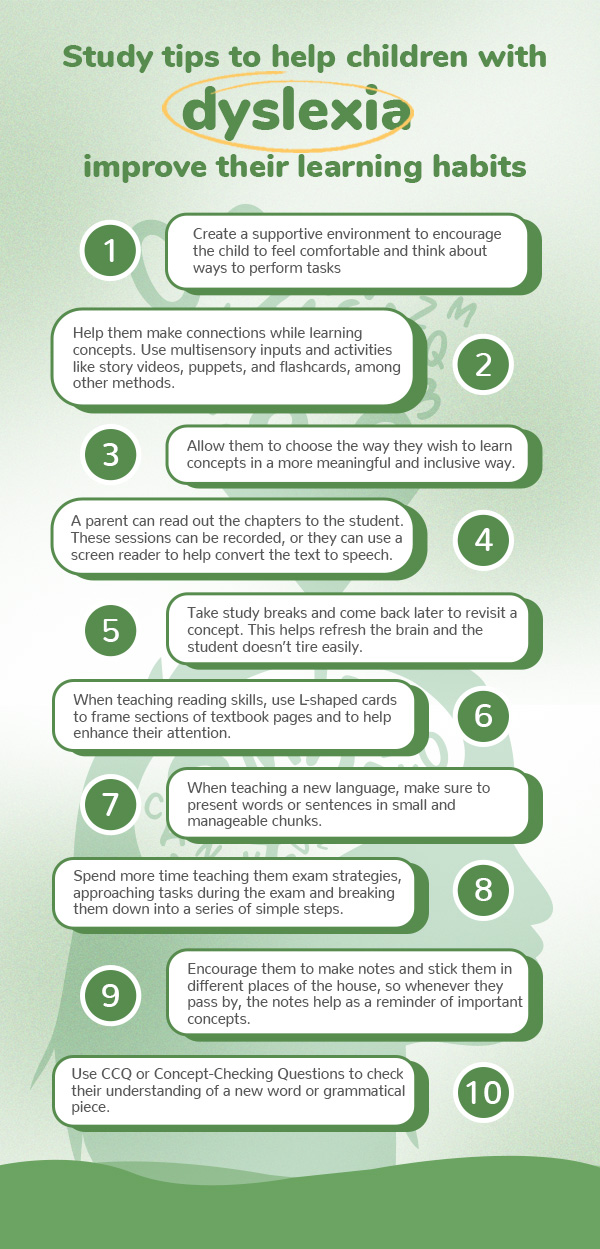Kshitij Raimane’s story was published in the Hindustan Times. Back in 2019, he was a second-year student in Master of Computer Application (MCA). He had Dysgraphia, a learning difference that impacted his handwriting and fine motor skills.
Kshitij’s mother approached the university and college officials to request that her son be accommodated during the examinations. The University of Mumbai (MU) helped Kshitij take his semester exams on a computer. These exams were typically conducted with pen-and-paper.
There are many students struggling endlessly to cope with their learning differences. But very few, like Kshitij, are accommodated. Be it dysgraphia, dyslexia, ADHD, or any other condition, it is essential that these students are given a levelled playing field during examinations. In this post, we’ll explore the learning habits and exam tips useful for students with dyslexia and other learning challenges.
Improving learning habits with dyslexia
Students with a learning challenge find it extremely difficult to focus while studying because of the distinct issues they face. Added to that are the problems they encounter as their parents, teachers, friends and people around them struggle to understand what they’re going through. Not to mention, the myths that surround their learning abilities.
Therefore, using Dyslexia learning tools with effective study tips can help make their journey easier, and improve their learning habits.
For instance, you could tutor a student with Scribeasy to boost their abilities in reading, writing, vocabulary, and spelling through storytelling. You can support this training with tools such as writing support, personalised thesaurus, emotional tools, and speech into text.
Another course that has helped students with learning challenges is the Clear View Speech module. This course is divided into two parts and helps students build their executive functioning skills and working memory.
You can also read more on this guide to address the learning needs of a child with dyslexia.
Also, as a parent, you would require the help of a Dyslexia Training Institute to ensure your child gets maximum support. These training institutes have staff with comprehensive training on the various methods involved in teaching children with learning differences. They have courses developed specially to benefit the child in a supportive and collaborative classroom culture. They focus more on building the child’s strengths rather than solely concentrating on the child’s inabilities in certain areas.
Seven ways to deal with exams
Many students with dyslexia have struggled during examinations. The exam formats are not suited to their intellect, leaving less room for them to score higher marks.
Therefore, it is important that they are taught significant ways of navigating through examinations.
- Firstly, they have to figure out what helps them stay focused in the limited time period of an exam. What can help the student prepare their brain to concentrate on the questions? Once the student figures out what works for them, they can use it to their advantage.
- Always have a plan of how you are going to write your paper. Having a plan will help relieve you of the stress and anxiety that comes with exams.
- Now, while this particular tip might work for all types of students, it works here as well. Make sure to first answer the easier questions, so you spend less time on questions that take longer to understand and attempt.
- Once you are done reading the question, read it again. Double or triple check to make sure that you’ve understood the question.
- There are going to be large sections to read. Students with dyslexia are likely to misinterpret the questions. In this case, using a sheet of plain paper helps, wherein you cover the larger area and read in shorter pieces. The student can continue to do this until they complete reading the question and understand what the question means.
- Longer questions make it difficult for these students as the words all seem to come together in a random fashion. So, the student can request the teacher to allow them to highlight the questions part by part. This makes it easier to comprehend the question while the student attempts to answer each section.
- Once the student is done answering each part of the question, they can also tick the question part-wise. They can do this until they are done answering the entire question.
We hope these tips will help you stay more focused during the exams, giving you the chance of getting a higher score.
